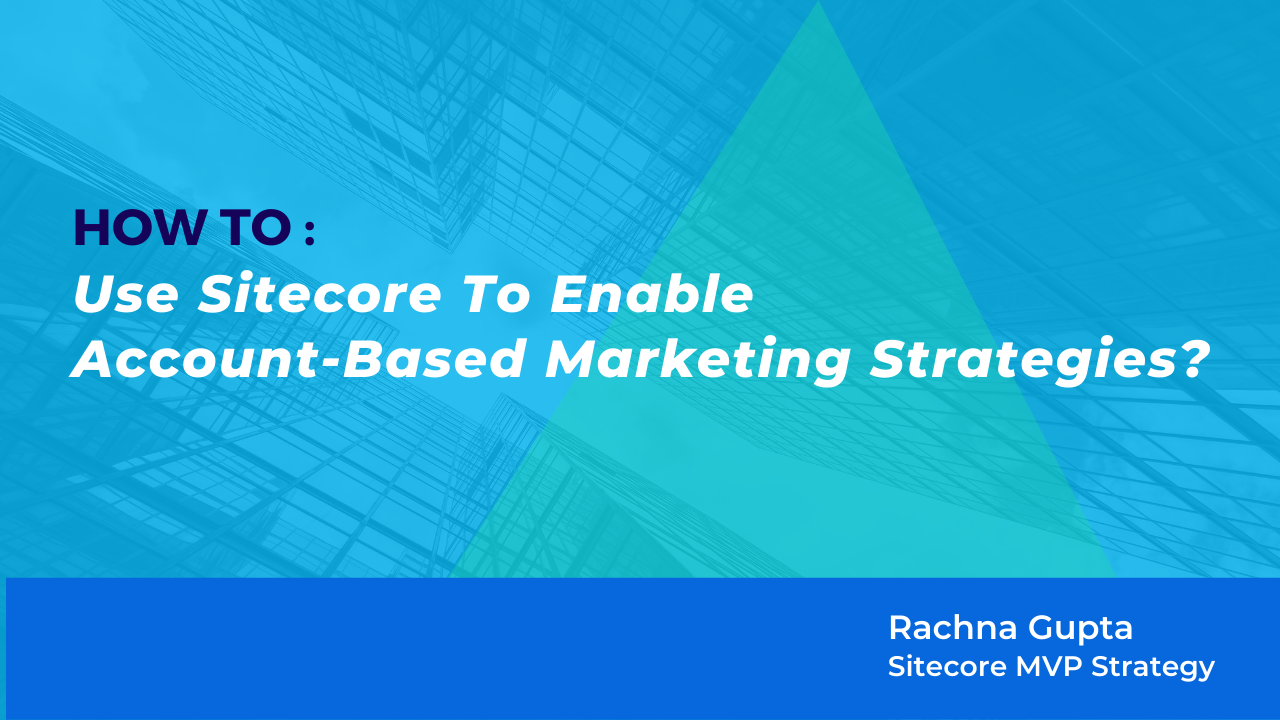Imagine you are an advertising agency that helps clients advertise their products and services on television. It is not wrong to say that all the businesses out there can be your clients, but don’t you think if your marketing and sales department focus on all these prospects at the same time, it can be difficult to track and convert. For the success of any organization, it is important that their Sales and Marketing teams work together to achieve their common business objectives.
What can be more effective in your case?
Well, if you can identify a few good accounts that match your client personas and then focus on those accounts only. You can direct all your marketing strategies to target these prospects. This can be a rewarding exercise with a good ROI and with proper tracking, you can convert these well.
What is Account-Based Marketing?
Account-Based Marketing in the B2B model is a focused approach towards selected, and best-fit accounts wherein both Sales and Marketing teams aim to convert these accounts into customers through various marketing strategies and campaigns.
There are multiple ways/tools by which organizations can achieve this. However, the steps to Account-Based Marketing are straightforward:
1. Identify the accounts your organization would like to target.
2. Use available tools to research better on these accounts.
3. Understand what these accounts are focusing on.
4. Create personalized / targeted marketing campaigns.
5. Target and retarget these accounts via your website and other advertising channels.
6. Set proper goal settings to identify the success of your campaigns.
7. Measure results and based on data strategize again.
Benefits of Account-Based Marketing
- Increased ROI: By targeting the right prospects, you reduce the marketing and sales efforts that otherwise go scattered. The focused approach of ABM reduces your ROI and gives better results.
- Alignment between Sales and Marketing teams: Before starting any marketing efforts, the sales and marketing teams can align on their focus customers and then go as one team to convert them into customers.
- Personalization: In the ABM approach, you can target these prospects through personalized marketing messages. Personalization has a better chance of converting, improved customer loyalty, and focused product/service recommendations.
- Easy to track: When you know the accounts that you are targeting for since the beginning, the tracking of your results becomes even more clearer.
- Conversion is high: The most important objective of any organization is to more and more prospects into clients. With the ABM approach, the sales cycles are shorter, and the conversion rate is higher.
- Retargeting becomes efficient: You can target and then retarget these accounts on various advertising channels, and your website. The retargeting effort will create brand awareness as per the need of these prospects and then conversion becomes easier. The whole retargeting process becomes efficient for organizations focusing on ABM.
How can you target accounts via your Sitecore website?
Once you have shortlisted the accounts you would like to focus on, it is time to target and retarget them via your advertising channels as well as your Sitecore website.
You can easily set up campaigns for these accounts and set personalization rules when they arrive on your website. With Sitecore personalization, you can either personalize a component or a complete web page to show focused messages.
How to do Personalization in your Sitecore website?
As discussed above, on your Sitecore website, you can easily personalize the content based on your contact’s different characteristics and behaviors. You can use the ‘Rule Set Editor’ to add different rules and personalization to the components on your website. The Rule Set Editor applies logic-based rules to your CMS. You can set up conditions, actions, and then set up rules for personalization.
Don’t wait if you own a Sitecore website and would like to follow an Account-Based approach as your marketing strategy, it’s the time you start it.
